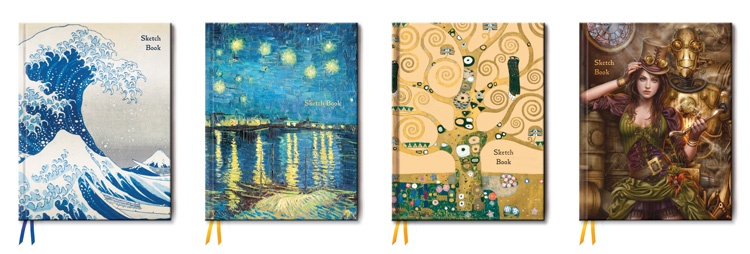
Why would anyone want to draw in these days of phone cameras and selfie-sticks? Because a drawing is unique. Anyone can take a photograph of a person, a landscape, a cat – but a drawing is a one-off, a personal view of a moment in time. Plus you can imagine whatever you want in a drawing – why stick to reality?
‘Drawing is a skill, not a talent… it is developed, by continuous and enthusiastic self-motivated practice.’
Now is as good a time as any to grab your sketch book and get drawing. Whether you enjoy the occasional doodle or are a budding artist, here’s a list of our 20 Top Tips for sketching:
Getting Started
- To start drawing, you only need three things: something to draw with, something to draw on, and something to draw. (Obvious, I know – but you don’t have to have a lot of fancy equipment to get started).
- Try to draw almost every day – from scribbles to capture an expression or movement, to more detailed pictures. The more practice you get, the better!
- Copy other artists – not to plagiarise their work of course, but practise their techniques and adapt them to your own style. Why not get inspired by the stunning artwork featured on the front of one of our sketch books, then flick to the inside to start your own project? See them here.
- Don’t be afraid to experiment – if you mess things up, just start again on a new sheet and don’t worry about it.
Drawing Basics
- The best results come from drawing from life – memory is no substitute.
- Models can be found anywhere – have you ever noticed how broccoli looks like a mini version of a tree? Or how a crocodile could be used to reimagine the features of a dragon?
- However, if you can’t sketch real people or objects, look at photo references as you draw. These could be photographs you’ve taken yourself to refer back to later, or simply browsing the internet.
- Sketch people around you every day and refer back to your sketch book when you need inspiration or information to get a pose right.
- To experiment with poses in three dimensions, you can buy a small, inexpensive wooden jointed model in a craft store and use it to sketch from.
- Most things can often be made easier to draw if you break them down into simple shapes first.
- Try to get a sense of perspective in your picture – things that are further away should be proportionately smaller. See this basic tutorial on perspective.
- Don't be afraid to draw roughly at first, you don't have to be precise from the very start.
- It can be tempting to give the edges of objects a dark outline, however that’s not very realistic. Use subtle changes in tone and colour instead to define your objects. Although, if you’re drawing in a cartoon style, a darker outline may be more fitting.
- If your drawing has come out just right and you’re worried that adding colour may ruin it, take a couple of photocopies and practise colouring on those.
Equipment
- If you’re out and about, felt-tips or even biros can be more convenient than pencils on the move, because they don’t need sharpening.
- To avoid smudging your work, try working ‘backwards’ – left to right if right handed or vice versa – and keep a scrap of clean paper under your drawing hand and wrist to avoid touching the paper.
- Using conté crayons, pastels or watercolour pencils gives a range of different textures to your work that can really enhance the picture.
- If inking using fineliners, pens, nibs or brushes, give a little extra time for the inks to dry – they will have less chance of smudging when you rub out pencil lines.
- If you plan on scanning your work into a computer, use blue pencil for basic sketches. You can draw on top of the blue lines to tidy up and refine your work, using graphite pencil or ink. When you scan it, the blue won’t show up. It saves you time on erasing your basic drawing, which can damage the paper you're working on.
- To protect and preserve your drawing, fix it using a spray fixative.
So there you have it, a few hints and tips to get you started. No matter what your style – manga, cartoon, realistic, fantasy – the most important thing is to draw what you love and enjoy doing it. Of course you'll need something to draw in. Have you seen the beautifully foiled and embossed sketch books we have to offer? Featuring designs from Hokusai, Van Gogh and Gustav Klimt to Steampunk artist Cris Ortega, you can see them on our website here.
Links
- Here’s a fun website with easy tutorials on how to draw your favourite characters, from Aladdin to Captain America.
- Take a look at this website full of articles on beginner drawing ranging from how to hold a pencil to how to shade an egg.
- This website has instructions on what materials to use for drawing.
- We've already published a couple of books full of advice on drawing and fantastic projects to copy - check out How to Draw Manga Made Easy and Anatomy For Artists Made Easy. Coming soon we're also excited about Drawing Basics Made Easy and How to Draw Dragons Made Easy.





